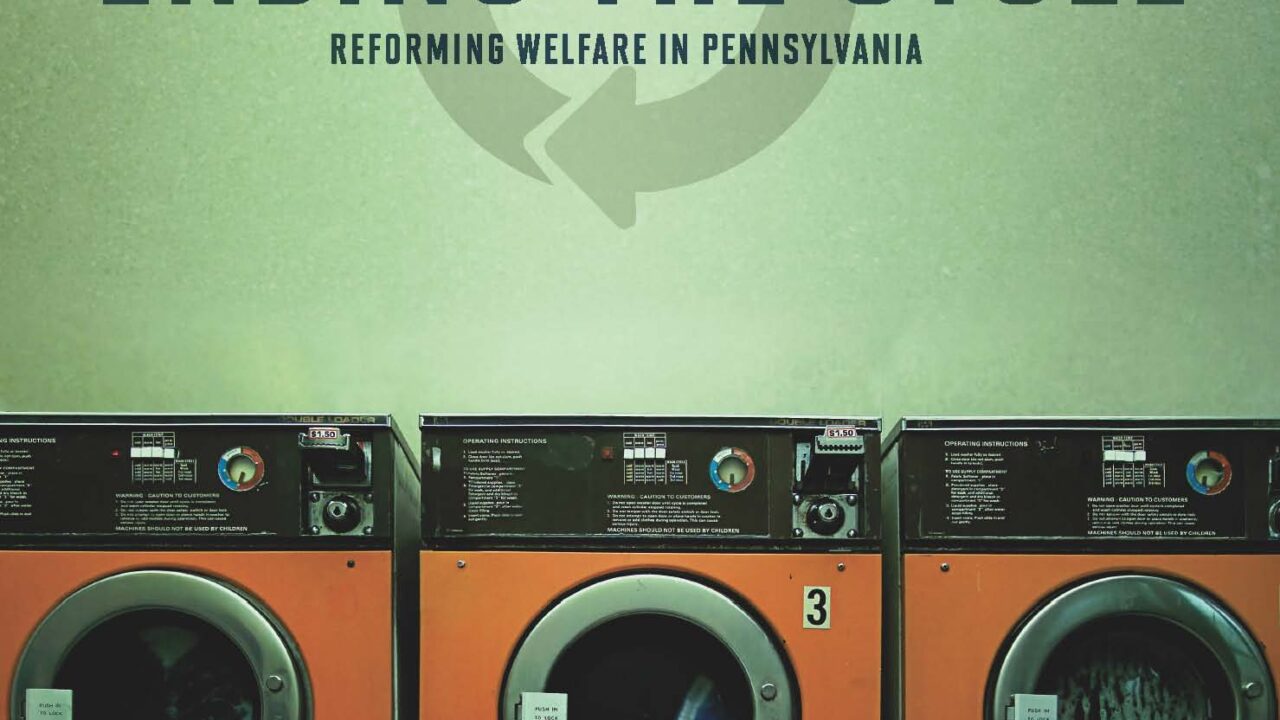Media

A Blueprint for a Prosperous Pennsylvania: Welfare Reform
Pennsylvania is facing an estimated $1.2 billion deficit next fiscal year. To bring the budget into balance without tax increases or borrowing, spending reforms must be implemented.
In our newest report, Blueprint for a Prosperous Pennsylvania, we suggest a variety of spending reductions and reforms to keep Pennsylvania fiscally solvent while creating conditions for future prosperity. One area driving our fiscal crisis and contributing to the poverty trap is welfare spending.
For 50 years state and federal governments have waged a war on poverty with a plethora of programs and trillions of tax dollars, yet poverty remains. In Pennsylvania, 13.1 percent of residents live in poverty even though Department of Public Welfare spending is the single largest area of the state budget, consuming 40 cents of every dollar state government spends.
Moreover, welfare spending is increasing as a share of the total budget. The Independent Fiscal office projects public welfare to grow by 4.9% per year for the next five years, faster than state revenue growth of 3.1%. While spending grows at unsustainable rates, fraud, waste, and abuse are rampant. To reduce this excess, the state should enforce eligibility standards, and advocate for federal flexibility to encourage employment.
In Medicaid, the largest welfare program, former Auditor General Jack Wagner found error rates exceeding 15%. If Medicaid’s error rate were reduced just one-tenth, it would have saved $439 million in FY 2011-12 and $1.9 billion through FY 2015-16. Simply reducing the rate of growth in Medicaid spending would have a dramatic impact on Pennsylvania’s budget picture. If Medicaid spending grew each year by 3%—instead of the 5.7% average annual increase of the past decade—taxpayers would save $3.2 billion by 2017-18.
In addition, Pennsylvania should demand flexibility from the federal government to fundamentally restructure the welfare system’s incentives, which encourage waste. People are often punished for earning more income as reductions in their benefits far surpass income gains from promotions or new employment. As a result, recipients are reluctant to risk a guaranteed income for the chance at a higher income in the future.
Encouraging employment should be a goal for all safety net programs, from food stamps to Medicaid. Strengthening work requirements, rewarding long-term employment rather than job searches or work search activities, and enforcing time limits are just a few ways to combat poverty and reduce welfare spending.
Be sure to check back with PolicyBlog for more solutions to Pennsylvania’s budget crisis.